How to check for gas leaks at home: effective ways to check and what to do in case of a leak
Gas appliances are convenient, highly efficient, economical, and make our lives more comfortable and simpler. But you need to be extremely careful when handling them, since blue fuel is a source of increased potential danger.
Due to violation of operating rules and failure to timely identify problems with equipment, explosions, fires occur, and serious poisoning and suffocation occur. To avoid unpleasant consequences, it is important to be able to recognize emergency situations and take appropriate measures. This knowledge will help protect yourself and your family.
The main factor indicating a malfunction is leakage. We will tell you how to check for a gas leak at home and what to do if one is detected. We will also consider the probable causes of the problems and remind you what preventive measures must be taken when using gas appliances.
The content of the article:
Main causes and locations of gas leaks
Sometimes a normal household leak is enough to cause a powerful explosion. An explosive mixture is formed when the concentration of blue fuel in the air reaches 5-15%. Under such circumstances, even turning on the light in the room will serve as a “trigger”.
There are two types of gas used in everyday life: natural, which is centrally supplied through the main pipeline, and liquefied, stored in special cylinders. Often, troubles are associated with gas cylinders. They explode when dropped or improperly stored or used.

In addition to basic negligence and ignorance rules for operating devices, common causes of leakage include the following:
- re-equipment, unauthorized installation of gas boilers and stoves in the wrong place, without prior agreement with specialists;
- illegal connection of devices by private individuals who do not have permission for such work;
- wear of gas pipes;
- poorly performed welding, rupture of welded joints;
- corrosion damage to the walls of the gas pipeline;
- ruptures and damage hosesconnecting equipment to the main line;
- abrasion of sealing materials on taps and hoses, poor quality of threaded connections;
- loose closing of the gas valve;
- extinguished flame when the burner is on (due to a draft, spilled water, contamination of the structure);
- Incorrect burner operation.
One of the most commonplace household reasons is incomplete closing of the gas burner.
Typically, leakage occurs in places of pinpoint deformation of pipes and valves outside and inside the house, in the area of \u200b\u200bthe gust gas stove hoses, leaking threaded and flange connections. This is caused by wear and tear of materials.
How to check for leaks in an apartment or house?
Identification and timely elimination of leaks is the main condition for the safe operation of gas appliances.Having noticed any signs indicating a problem, it is advisable to immediately call the gas service.
There are several checking methods that will help you understand whether there is a gas leak and whether you should sound the alarm.
Method #1 - by smell and hearing
The main sign indicating a probable leak is a characteristic specific smell in the room.

The gas itself, intended for domestic use, is neutral, both in color and odor. But to prevent emergency situations, special substances are added to it - odorants. It is these components that give the mixture an unpleasant aroma, which makes it possible to accurately determine the excess gas concentration in the air.
If there is a strong smell of rotten cabbage, rotten eggs or rotten hay in the room, then there is a leak somewhere. It is often mistaken for the stench of spoiled food, the aromas of fuels, lubricants and paints. However, if you suspect something is wrong, you should definitely make sure that there is no problem.

Another sign of leaks is a whistling sound that appears in places of depressurization. In damaged areas, gas escapes in a strong stream with whistling and hissing. This sound indicates obvious, serious malfunctions.
Method #2 - checking for leaks by touch
Even though the gas is invisible, its leak can be felt by touch. To do this, you should run your hand along the junctions, joints, and flange connections of the gas pipeline. The mixture coming out feels like a stream of cold air.
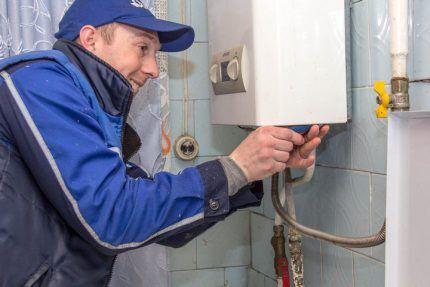
The tactile method is only suitable for easily accessible places where gas pipes not covered by a kitchen unit. In restricted areas, other inspection methods are used.
Method #3 - testing with soap solution
To confirm the presence of a malfunction and identify the problem area, conduct a visual inspection of the pipes using a soap solution to check for gas leaks.
A specially prepared foam solution is applied with a thick brush or shaving brush to hoses, pipes, and joints. It is recommended to lubricate valves and connecting elements especially carefully.
After application, it is important to carefully inspect each area coated with the solution. If soap bubbles appear somewhere, this indicates the release of gas in this area.
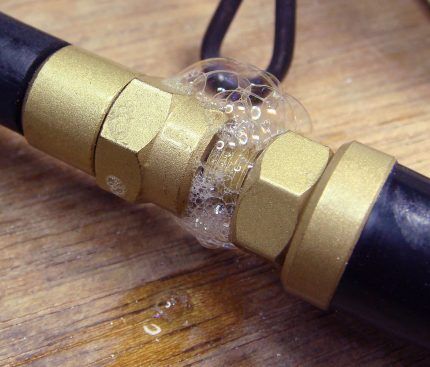
When checking the external gas pipeline outside the house, you need to pay attention to brown spots on the snow, yellowing of vegetation, disturbances in the ground cover and the formation of snow frost. These are all signs of a possible leak.
Method #4 - pressure testing for residual pressure
Next, we’ll look at how gas leaks in hard-to-reach places in an apartment are determined. The method of pressure testing for residual pressure is ideal if it is inconvenient to make your way with a soap solution and equipment. It allows you to check all connections: from the burners to the tap. The manipulation will take several minutes to complete.
First you need to open the burners and pass gas through them. Then you should turn them off, block gas valve on the pipe. Thus, a residue that has not completely burned out will appear in the system.
Next, after waiting from 1 to 3 minutes, perform the following steps:
- remove the lid from any burner;
- a lit match is brought to the middle;
- The burner switch is sharply opened to the maximum position.
If there are no leaks, the remaining gas in the system will burn out. Otherwise, the residue will have time to escape through the damaged area and nothing will happen when the fire is brought to the burner.
Method #5 - using sensors and a gas analyzer
The safest, most reliable and practical way to detect a leak is to install a gas detector in the room. This is a special device equipped with sensors that detect the presence of methane and carbon monoxide.
If the concentration of these substances is exceeded, light and sound signals are activated, notifying the owner of the problem. The device is installed at a distance of at least 30 centimeters from the ceiling.

Wired sensors operate on mains power, while wireless sensors operate on batteries. The former are easier to maintain and do not require monitoring the battery charge level. The latter are mobile and do not depend on electrical power.
The main difference between the models is the method of determining fuel concentration, according to which there are three types of gas analyzers:
- catalytic;
- semiconductor;
- infrared.
Catalytic Gas analyzers are more often used at industrial facilities; they can operate both from mains and batteries. They are equipped with a chamber in which a small amount of gas burns, triggered even when its concentration is slightly exceeded. At the same time, the temperature of the coil changes, to which the electronic microcircuit responds by triggering notifications.
Semiconductor The sensors are affordable and designed for household use. They operate only from the network, while their energy consumption is minimal.
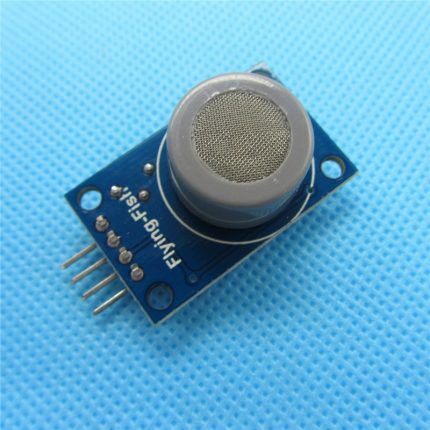
Infrared models are the most reliable and comfortable. They operate on batteries and mains power. Their advantages include instant response, a minimum of false alarms, and economical energy consumption.
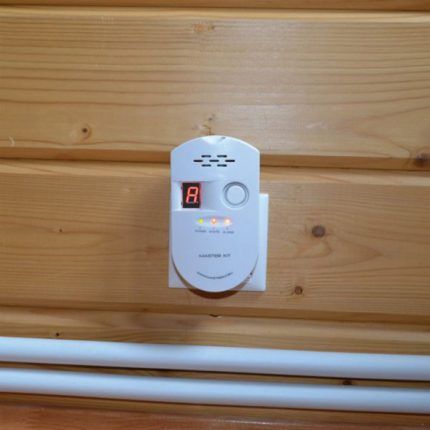
In addition to stationary equipment that carries out continuous analysis of the gas environment, there are portable gas analyzers, which are used to locate leaks in pipes or short-term measurement of gas concentration. They are usually used by gas service specialists.
Procedure for detecting a leak
If you suspect a leak, you should not fix the possible damage yourself. Instead, you need to immediately call the emergency gas service by calling “104” or call the single emergency number “112”. Moreover, it is better to do this after leaving the apartment.
You cannot use mobile and landline phones in a gas-filled room..
Before the arrival of specialists, it is important to adhere to certain rules of conduct.
First of all you need to:
- Stop the gas supply as quickly as possible by closing the gas pipe valve located behind the stove and the dispenser tap.
- Open all windows, vents and the entrance door in the room, ensure through ventilation.
- Remove people and leave the premises to the street or to a safe place.
- Turn off the electricity supply to the panel.
Under no circumstances should you turn lights or electrical appliances on and off. Any small spark can become the detonator of an explosion.
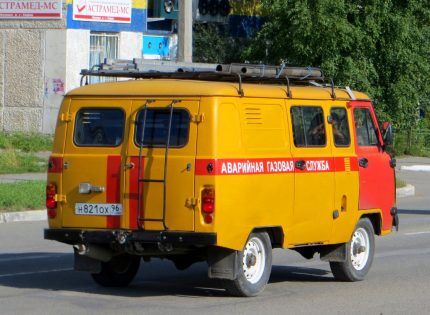
If gas ignites in a damaged area, do not extinguish the flame yourself. As long as the mixture burns, it will not explode. In this case, you should immediately leave the premises and call the rescue service.
Set of preventive measures
A number of preventive measures will help prevent gas leaks, associated extreme situations and other unwanted problems.
Rules mandatory for all household consumers:
- when leaving the house, turn off all gas appliances, close the valves responsible for the gas supply;
- do not connect or repair the equipment yourself or with the involvement of dubious specialists, and you cannot make any changes to the design;
- monitor the proper functioning of the supply and exhaust ventilation, request a draft check from gas company specialists, regularly ventilate the premises;
- do not use the stove for heating, drying things and other items made of flammable materials;
- remember the correct sequence of turning on the appliances: first light a match, and only then open the gas;
- do not leave the switched on equipment unattended, do not allow children and persons unfamiliar with the operating rules to access it;
- When checking for leaks, do not use lit matches or a lighter.
Regarding gas cylinders, refuel they are needed exclusively at specialized points. Containers should be stored in well-ventilated areas, but not on balconies, apartments or garages. They should be in an upright position in the shade, since heating from the sun's rays is contraindicated for them.
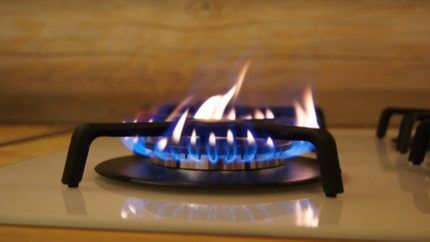
The most important rule is not to neglect the norms prescribed in the instructions for safe operation of devices.
Gas equipment installed in the house must be in good condition, meet technical requirements, undergo regular maintenance and checks. The use of faulty devices is strictly prohibited.
Conclusions and useful video on the topic
Useful information about gas leaks from the Ministry of Emergency Situations:
An overview of the most effective methods for detecting leaks that are used at home:
Whatever gas equipment is used in everyday life, it is important to adhere to the operating rules and respond in a timely manner to signals indicating a possible gas leak. To recognize these signals and check whether gas is actually escaping somewhere, use the methods suggested above, and if there are problems, immediately contact a specialist.
Remember that extremely careful handling of gas in houses and apartments, and compliance with operating rules allows you to protect and preserve health, life and property.
Have you personally encountered a gas leak problem and successfully solved it? Share your experience with other users - describe your method of detecting a leak, tell us how quickly you managed to eliminate the problem. Leave useful recommendations and participate in the discussion of this hot topic - the feedback form is located below.



